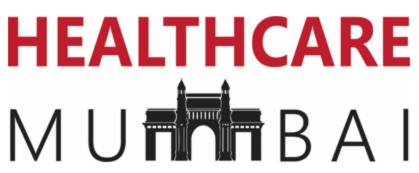- The author of this is Dr. Rahul Pandit, Director-Critical Care, Fortis Hospitals Mumbai & Member-Maharashtra’s COVID Taskforce
In the last 10 years, WHO, epidemiologists, global thinktanks and scientists have raised several concerns on the world’s ill-preparedness to respond to a severe influenza pandemic or to any similar public health emergency. Seeing the collateral damage caused by COVID19 in India, it was apparent to those in charge of tackling the crisis, and to the public, that existing health systems had inherent vulnerabilities which were brutally exposed.
While we built resilience in this period and fast-tracked vaccination to the citizens, much needs to be done to fortify our healthcare system, and ensure that no other virus or health crisis impacts us to this magnitude.
NEED TO FIX THE GLARING GAPS:
Preparedness: We expanded our infrastructure, bed capacity, roped in manpower from other departments, roped in the private players, etc. however, we could have put this in order pre-pandemic when the warning bells rang on international shores. This way, we could have been better prepared and saved more lives. Secondly, while we thought of upgrading our infrastructure, we did not account for the bare essentials – appropriate training of manpower, medication management, PPE procurement, etc. Manpower with little knowledge of acute care was being roped in to manage patients, there were no guidelines – this could have had indirect attribution to the rising mortality rates in the initial days. Lack of understanding in critical care set-ups amongst the emergency staff during the pandemic added up to the already existing lacunae.
Disease management: Pathophysiology understanding was the need of the hour, but there was no official mechanism or guidelines for patient management were put in place. Medicos in small centers and tier II & III towns lacked this understanding, and so disease management became difficult; this continued to exist even 4/5 months into the pandemic. There was a stark gap in the clinical care in remote areas, it required hosting multiple teaching & learning sessions with doctors in each district.
Treatment protocol: The changes with disease management were rapid, the prevention protocols and the disease itself were evolving. A lot of stress was given to alternate therapies like steam inhalation, warm water gargles etc., instead of following simple rules of masking, hand sanitization, and social distancing (SMS). Lack of stringent rules of mask-wearing and social distancing led to the rise of pseudo-confidence among the younger population which spread like wildfire over mobile messaging. Key messaging by the government kept on urging the older population to stay protected; younger population however kept their guard down.
Well formulated guidelines: Better collaboration and coordination among government agencies, the private sector and the public was need of the hour. Disease categorization was another issue & non-compartmentalisation of treatment added to the complexity. More importance was given to unproven therapies. Barring our research on Plasma Therapy, we did not have any good quality research to back up the experimental therapies.
Testing capacity: We began with limited testing capacity, scaling up took time, there was also a big wait time before the COVID reports came in. However, within a few months the testing capability improved several folds and became cheap & easily accessable. Importantly, for patients that traveled into Indian territory did not have to undergo institutional quarantine – this happened only at a later stage. This added up to an increased transmission rate.
Management of patients: Management of patients at the ward level was rapidly streamlined. However, the ICUs were in a difficult situation. There are very few trained Intensivists in the country and they were sorely missed during the pandemic. Non- Intensivists were roped in to manage these areas and it was hard for them to cater to the patient effectively. Intubation hesitancy, ventilator hesitancy, ARDS management was hit due to limited understanding among the staff. There was increase in the use of non-invasive ventilation, only after that failed did the physicians start using the ventilators – in many cases, by then, precious time had lapsed.
Apart from these the other issues involved the loss of personalized touch in health. Mental health impact was greatly seen. PTSD like symptoms and other mental health distresses points were seen especially amongst those who had a lengthy hospital stay, or amongst those who have lost a loved one to the disease Nevertheless, there were some extremely noteworthy factors that saved us from huge devastation.
INDIA’S EXPERTISE IS REMARKABLE
Efficient Isolation measures: We took concrete steps to isolate patients and their contacts in a bid to curb the spread of COVID 19. Government institutional quarantine centers and jumbo care canters were quickly put in place. Gradually, private players were roped in, which further bolstered the isolation facilities. Home quarantining extension provided by private players was also a progressive step.
Wise use of steroids: Around the world early discussions about the positive effects of steroids were not taken seriously and debated. Contrary to that, India adopted to early use of low dose steroids, and this was a main reason for the country witnessing lesser mortality as compated to the west. It took a lot of effort to prove the worth of steroids in COVID treatment. HCQ was rather adopted quickly along with other medications that had no proven role or efficacy
Effective resource management: Resource management was very well implemented. Civic bodies along with the FDA ensured that the medication was not hoarded and that it was available through legitimate channels. This ensured that black-marketing was curbed. Also, the cost of medication was regulated to ensure the affordability of medicines
SO, HERE COMES THE LEARNING CURVE.
It was okay to communicate using non-traditional routes: Telecommunication and video consultations came in as a saving grace. It helped to bridge the doctor-patient gap and ensured that there was no break in doctor-patient communication, despite being home-bound. To further beat the crisis, the following was done:
- Tele-ICUs were prioritized
- Medical manpower worked in shorter shifts
Despite limited understanding of the medication that could be used to treat COVID patients, doctors and patient families understood the reality and supported healthcare providers
Public awareness increased manifold with immense efforts taken by the government, civic authorities and private players. Doctors, community members and community leaders ensured that they upgraded safety mechanisms, adopted the six-minute walk test (6MWT), highlighted red flags wherever necessary and encouraged utilisation of hospital services during emergency.
THE WAY AHEAD
- Going forward, Infectious Disease management policies, preparedness, bio-safety management, PPE usage, donning and doffing process – should all be a part of the medical curriculum. We should have ready set-ups at all hospitals for all Infectious Diseases. Manpower should be adequately trained to deliver and take charge when required
- The public should be sensitized to act responsibly towards oneself, one’s family and the society. SMS adoption (Sanitization of hands, Masking, Social Distancing) is of utmost priority. Understand and instill self-hygiene, community cleanliness and a positive civic sense
- The government and policymakers must raise national health systems and standards, to international benchmark scrutiny, and bring more transparency into the system





